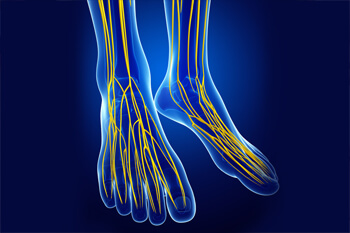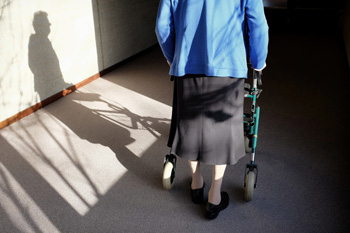 Broken toes are often a result of something being dropped on it, stubbing it, or bending it the wrong way. Broken toes are often indicated by a snap or popping sound when the injury occurs, swelling, bruising, deformity, decreased movement, and worsening pain when the toe is moved or touched. Patients who believe that they have broken their toe should consult with a podiatrist for a proper diagnosis. A podiatrist will check the toe and may need to take an x-ray. Once the broken toe has been diagnosed, the podiatrist will choose the treatment option that is best for the particular injury. Depending on the severity of the break, the toe may be “buddy-taped” to the uninjured toe next to it. A cast, splint, or brace may also be used to treat the toe, and in severe cases, surgery may be necessary.
Broken toes are often a result of something being dropped on it, stubbing it, or bending it the wrong way. Broken toes are often indicated by a snap or popping sound when the injury occurs, swelling, bruising, deformity, decreased movement, and worsening pain when the toe is moved or touched. Patients who believe that they have broken their toe should consult with a podiatrist for a proper diagnosis. A podiatrist will check the toe and may need to take an x-ray. Once the broken toe has been diagnosed, the podiatrist will choose the treatment option that is best for the particular injury. Depending on the severity of the break, the toe may be “buddy-taped” to the uninjured toe next to it. A cast, splint, or brace may also be used to treat the toe, and in severe cases, surgery may be necessary.
A broken toe can be very painful and lead to complications if not properly fixed. If you have any concerns about your feet, contact the podiatrists from Boston Common Podiatry. Our doctors will treat your foot and ankle needs.
What to Know About a Broken Toe
Although most people try to avoid foot trauma such as banging, stubbing, or dropping heavy objects on their feet, the unfortunate fact is that it is a common occurrence. Given the fact that toes are positioned in front of the feet, they typically sustain the brunt of such trauma. When trauma occurs to a toe, the result can be a painful break (fracture).
Symptoms of a Broken Toe
- Throbbing pain
- Swelling
- Bruising on the skin and toenail
- The inability to move the toe
- Toe appears crooked or disfigured
- Tingling or numbness in the toe
Generally, it is best to stay off of the injured toe with the affected foot elevated.
Severe toe fractures may be treated with a splint, cast, and in some cases, minor surgery. Due to its position and the pressure it endures with daily activity, future complications can occur if the big toe is not properly treated.
If you have any questions please feel free to contact our office located in Boston, MA . We offer the newest diagnostic and treatment technologies for all your foot and ankle needs.



 Metatarsalgia
Metatarsalgia Bunions
Bunions 








